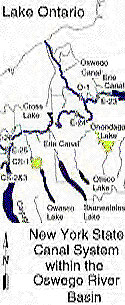|
-- the Relationship between Auburn and the Prison© LABOR SYSTEMS
In 1821, an experimental agreement was made to permit Samuel D. Dunham, an entrepreneur, to utilize the labor of five convicts to manufacture tools. He furnished the materials and equipment, paid a fixed sum per day for the convict labor and was responsible for the sale of the articles produced. This system worked quite well. It became known as the piece-price system. At other times a contract labor system was used. Contract labor was introduced in Auburn in 1828 under Warden Gersham Powers by authority of the State Legislature. Four hundrd-eleven convicts worked on contracts that year. Average daily earnings per man were $.27. The institution received the cash, not the prisoners. The total disbursement for operation of the prison in 1828 was $35,504. The total income from contractors was $34,504. Warden Powers maintained that the most sanguine economist never dreamed of making prisoners pay their support and also for the prisons to confine them.
Under the contract system prisoners were leased to outside firms at a daily rate per capita, usually fifty cents for a ten hour day, although it varied depending on the type of work. At times there was a combination of the two systems, the contractor furnishing raw materials, machinery and foremen; the prison supplying the work space, the convicts and their keep ers. The keepers maintained discipline in the shops. Contract labor proved to be profitable and from 1828-1841 the prison produced enough revenue to support itself and pay for officer's salaries. REACTION OF VILLAGERS Early assessments of the presence of the prison in the community were encouraging. According to an early report, the advantages accruing to the village from the location of the prison of Western New York were very great. The dignity and importance of Auburn among the villages of the state were immeasurably enhanced, the place rose into general notice, and by the development of its quarries, water power and other natural resources, its citizens acquired wealth and prosperity and the population advanced steadily. In 1825 it was reckoned that Auburn contained 2,982 persons. There was a downside which upset villagers not associated with the prison. There was in the public mind a morbid sensitiveness upon the subject of rigid convict discipline and much controversy over the question. For some the introduction of convict labor was a great embarrassment. The increased discipline necessary to prevent the convicts from maliciously destroying their work was distasteful to the public. But the competition between convict and free labor was more so. The mechanics of the village dreaded a loss of business. But, the state could not afford to sustain prisoners in idleness and the use of convict labor continued. All who employed it lost popularity in the village. PUNISHMENTS Hard labor under the contract system became a fetish. Afterall, hard labor was the rule of life outside the prison. If the prison could be made less costly by the labor of prisoners, hard work should be the rule inside the prison walls. And besides, hard labor was considered indispensable in any possible reformation of the prisoners. Getting the convicts to work wasn't always easy. The system could not be maintained without prompt, severe and effective punishment. Shaved heads was one way to humiliate and subjugate. Other punishments included the yoke, the dungeon or solitary confinement on shortened rations, the ball and chain, and the lash or whip. Reformation by horror, constant hard labor, and by breaking the spirit was the Auburn method. Every attempt was made to isolate an individual and deprive him from all meaningful contact with his fellows. The system was satisfactory economically. The most striking feature of the system, however, was its physical cruelty to the convicts, for the lash was used often to enforce discipline. In addition prison officers wore sidearms and were prepared to use their weapons if deemed necessary. They did not expect much of a rebuttal from the outside community. Keepers were to carry weapons in the workshops until 1929.
An intense preoccupation with financial considerations was very apparent in the development of prison industries under the Auburn System. Economy-minded legislatures desired to exploit convict labor without regard to the adverse effects experienced by prisoners. ECONOMIC SETBACK IN AUBURN The financial panic of 1837 which affected the entire country was a period of business reversals and calamities in the village of Auburn. There was widespread suffering among all classes. Real estate values crumbled. To compound business woes, a massive fire on Jan. 21st destroyed fourteen wooden buildings on the south side on Genesee Street. The local economy did not recover for over five years. Yet the earnings of the prison did not diminish. Under the cruel leadership of Elam Lynds the earnings during 1839 were $60,161 while the expenditures totaled $51,671, a savings of $8,490 or 16.5 percent of expenditures. Fortunately for Auburn the economy began to recover. The construction of the Erie Canal just ten miles north of the village meant that Cayuga County could establish a trade route for its agricultural products. The coming of the railroad in 1839 provided more access to markets. Eleven years after the Panic of 1837, Auburn was chartered as a city on the 21st day of March, 1848, having then nearly 8,500 inhabitants. It had gradually assumed its old time appearance and prosperity. Legislators in Albany continued to be pressured by local contractors who profited handsomely from their contracts with the prison. Legislators in turn pressured prison officials to make the institution pay for itself. The profits of the outside firms, however, exceeded the revenue paid to the prison by as much as two-thirds their costs. Prison officials had no choice except to work the prisoners harder. The mistreatment of convicts was to continue unabated for nearly forty years. For them it was a gloomy and disheartening situation. |



